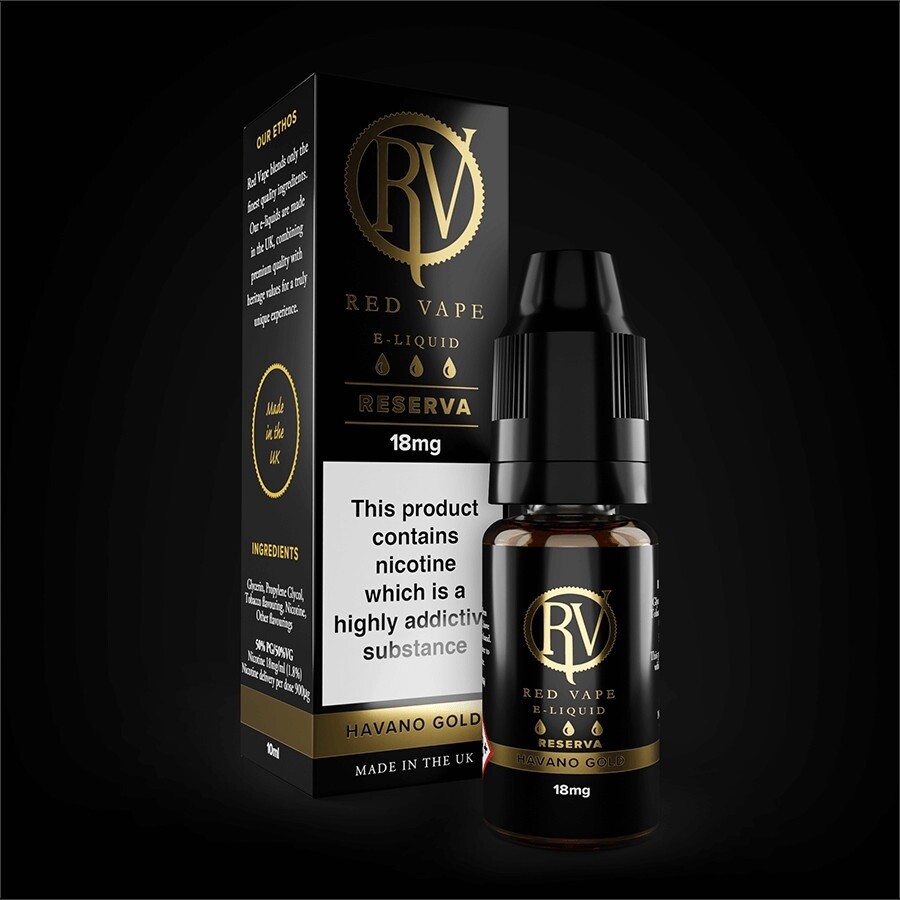Havano Gold - Red Vape
Havano Gold by Red Vape
Corojo tobacco is widely used in the production of Cuban cigars, and was extensively used as a wrapper for much of the 20th century. A susceptibility to disease has led cigar makers to look elsewhere for more hardy tobacco varieties in recent times. However, it was Corojo’s peppery notes that gave Cuban cigars their spicy punch and helped make them so highly regarded around the world.
The Jamastran Valley in Honduras is now the only location where you will find pure, original Corojo grown. Hybrid varieties that are more resistant to disease have been developed and are widely grown in Cuba and the USA.
Tasting Notes
An elegant, smooth vape for the tobacco purist. Havano Gold delivers a good throat hit and has a slight sweetness on the exhale. Peppery notes from the Corojo tobacco come through to offer a cigar-like vaping experience.
Red Vape E-liquid production:
Red Vape gets its distinctive flavour from the barrel fermentation process that Louisiana settlers learnt in the 18th and 19th century from the local Choctaw and Chickasaws Native American tribes. These tribes had been producing Perique for over a thousand years, and it was Pierre Chenet who learnt the process and developed it along with more western production techniques.
The tobacco plants are harvested when the leaves are a dark, vibrant green colour and the plant itself 24–30 inches in height. After harvesting, they are hung in curing barns until the leaves are dry but still supple. The leaves are then rolled into “torquettes” and placed in whisky oak barrels under giant jack screws, which keep the tobacco under constant pressure. Every few months, workers take all the leaves out, put the bottom ones on top and press them back under the screws. The entire curing process takes more than a year. The result is a powerful experience, with fans describing Perique as spicy, earthy and rich.

